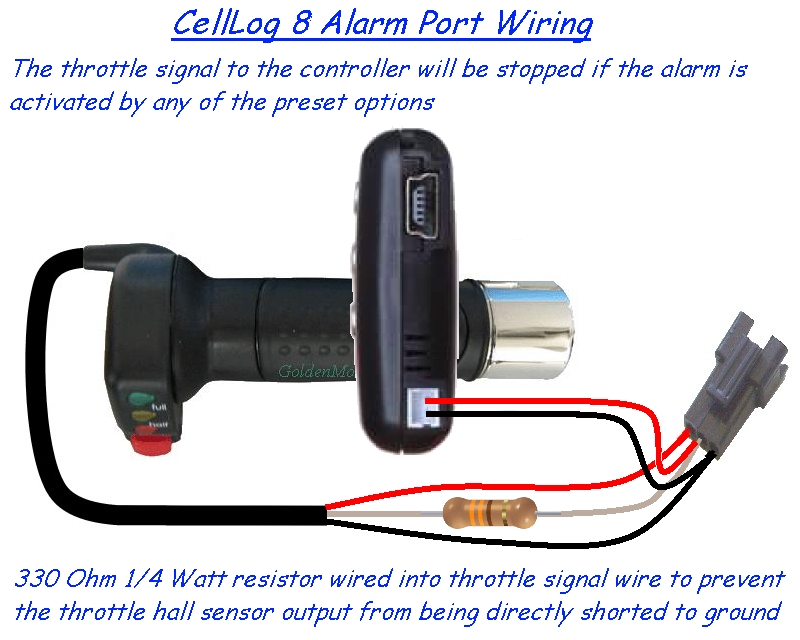The GM Controllers will work with any voltage between 24 and 48, the maximum charged battery voltage must not exceed 60V.
The voltage selection in the programming software is there to set the Low Voltage Cut-out
(LVC) to suit the battery voltage being used.
As most batteries have a Battery Management System
(BMS) which includes its own LVC, the voltage setting in the controller can be left on the 24V setting without causing any problems.
All Magic Pies and Smart Pies can run on 24, 36 or 48V, as the motors can cope with the higher voltage, but it might not be a good idea to run a standard 24V motor on 48V.
Here is a basic diagram showing how to easily connect the alarm port wiring on either the CellLog 8S or the 8M to cut the throttle when the alarm is activated:

As the alarm function can be set to operate on both minimum and maximum user defined voltage levels, a more complex system could be designed using a miniature crossover relay to simultaneously cut the throttle
and disable the regen. This would also prevent overcharging when you set off from the top of a steep hill with a fully charged pack that isn't equipped with a
BMS.

Check out
this post for more information on the CellLog 8.
Alan